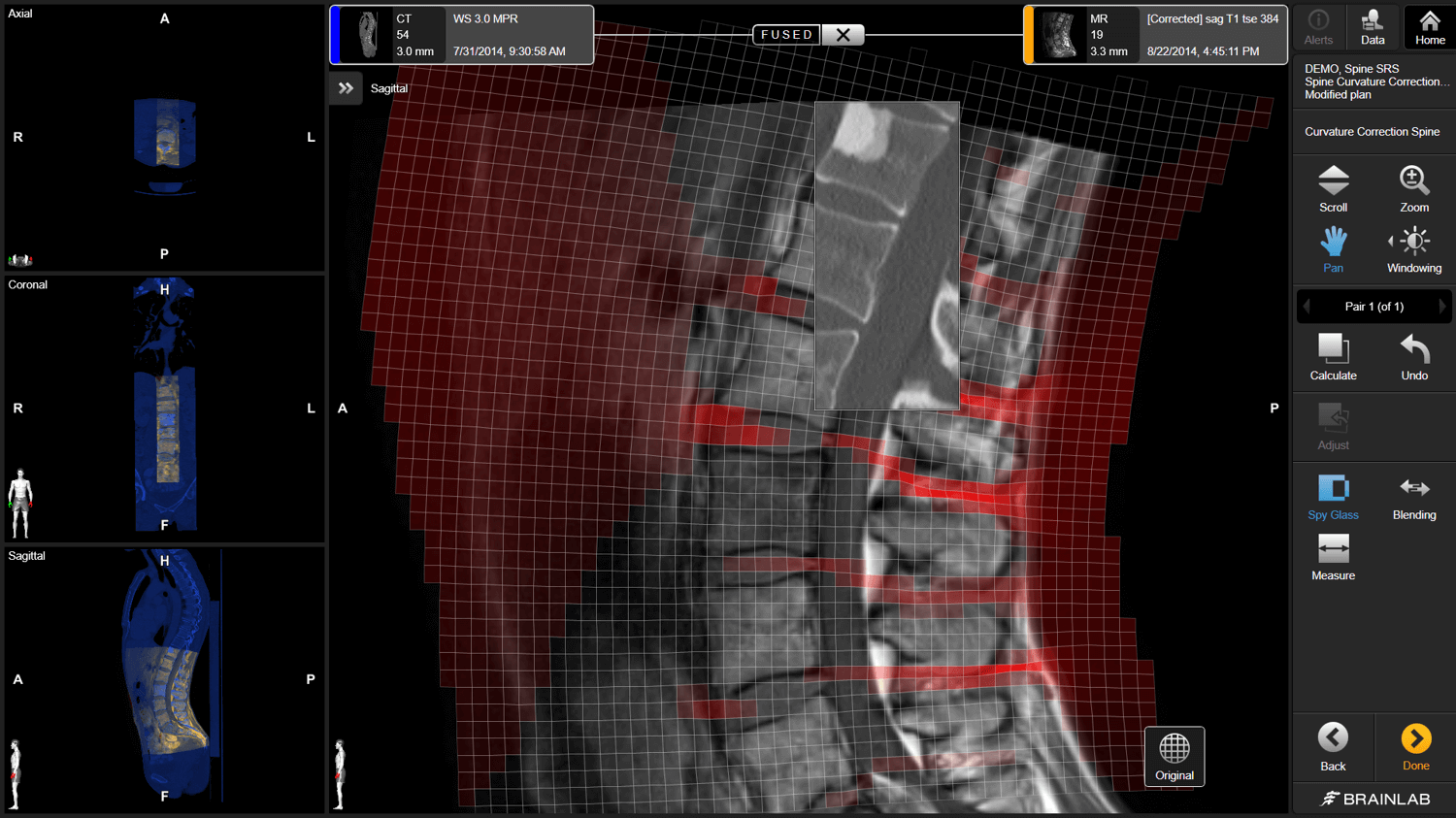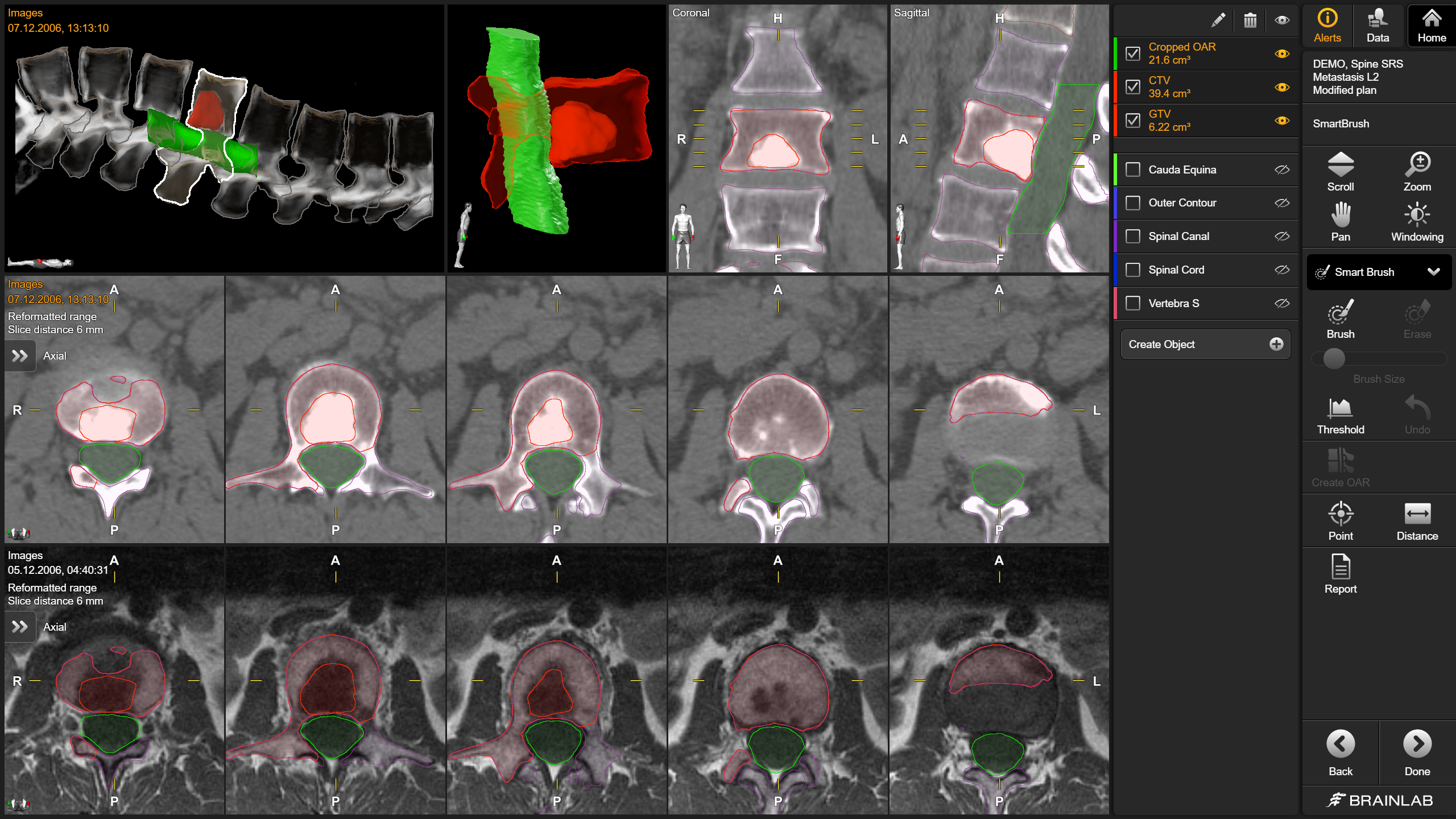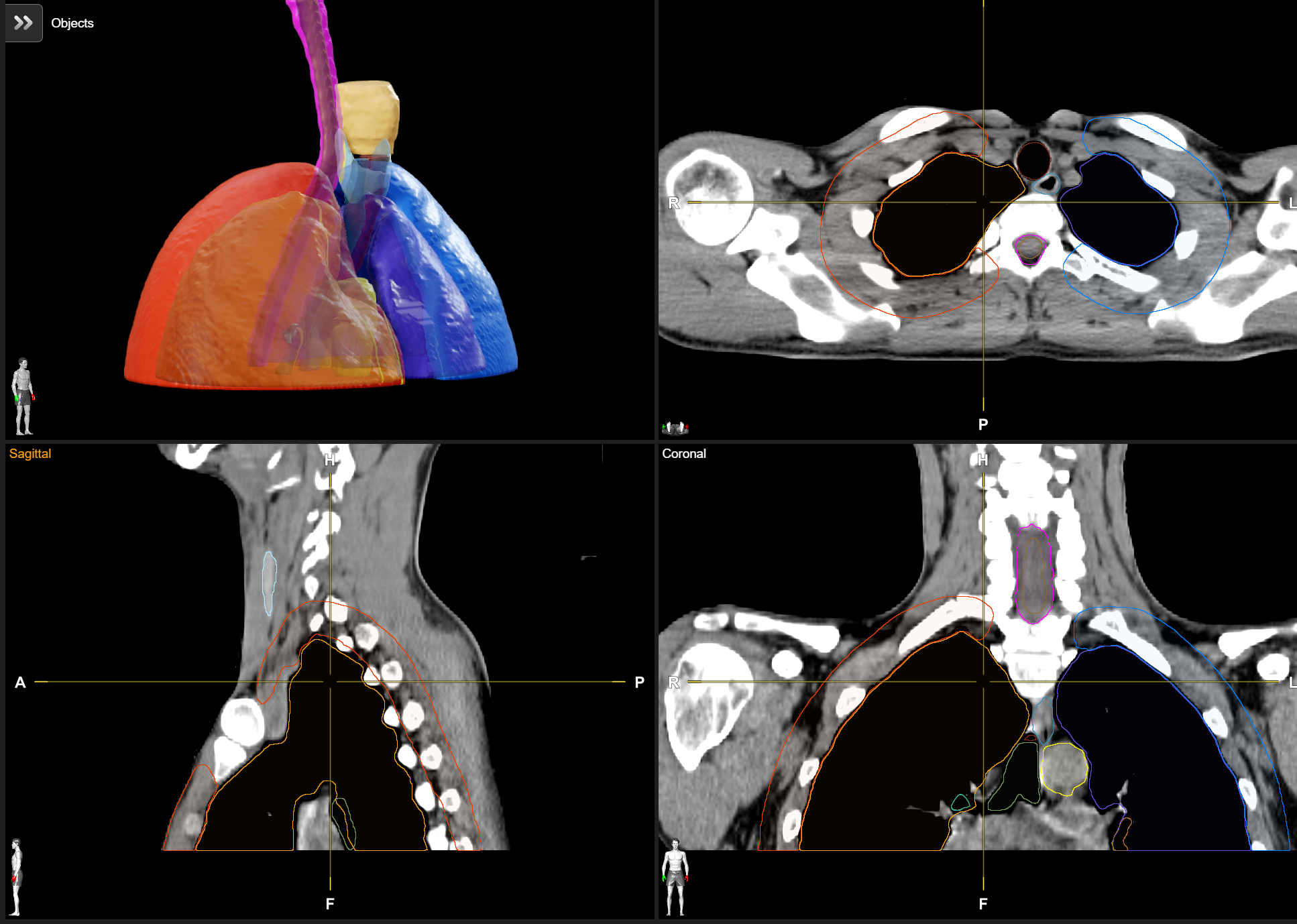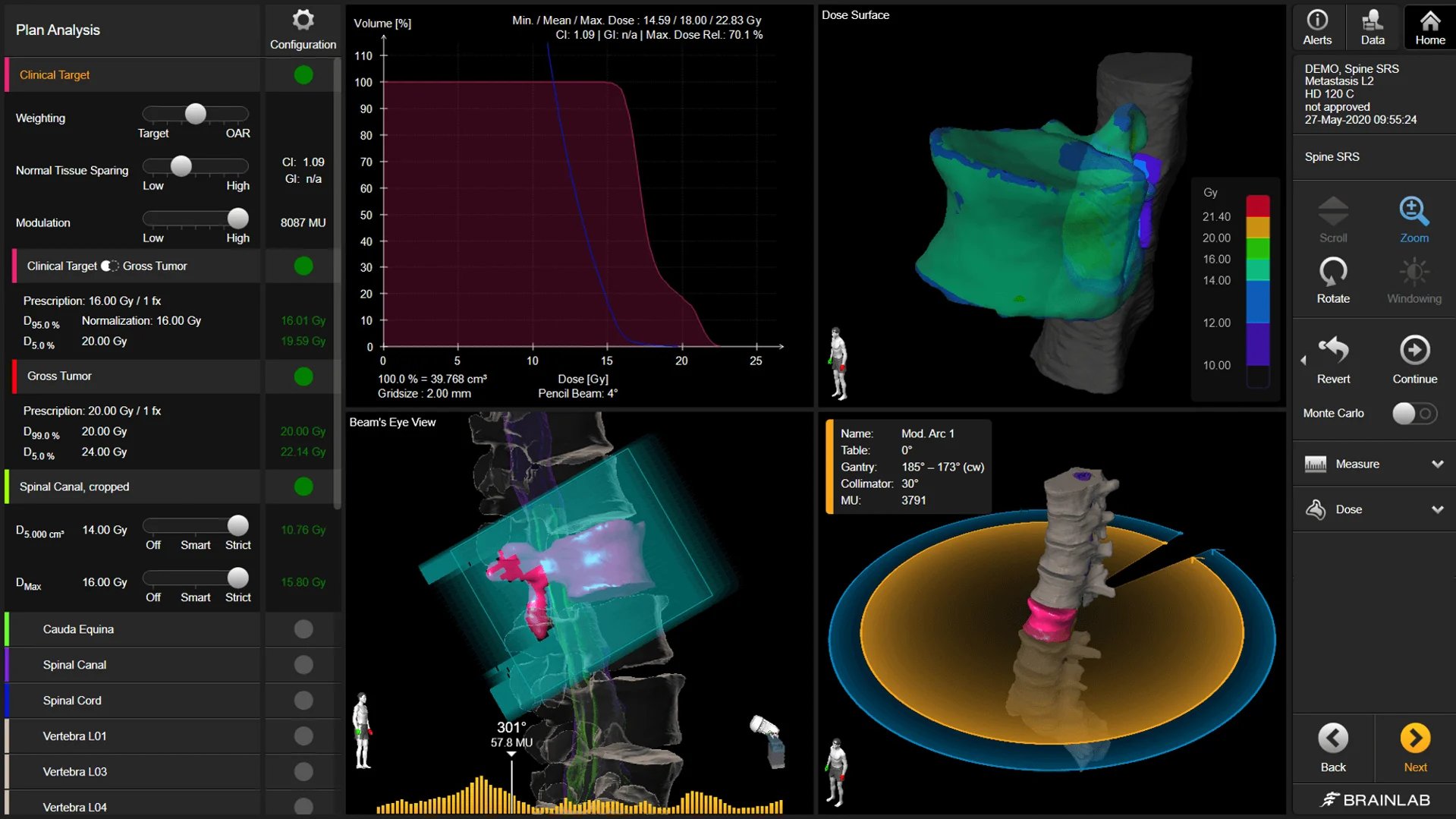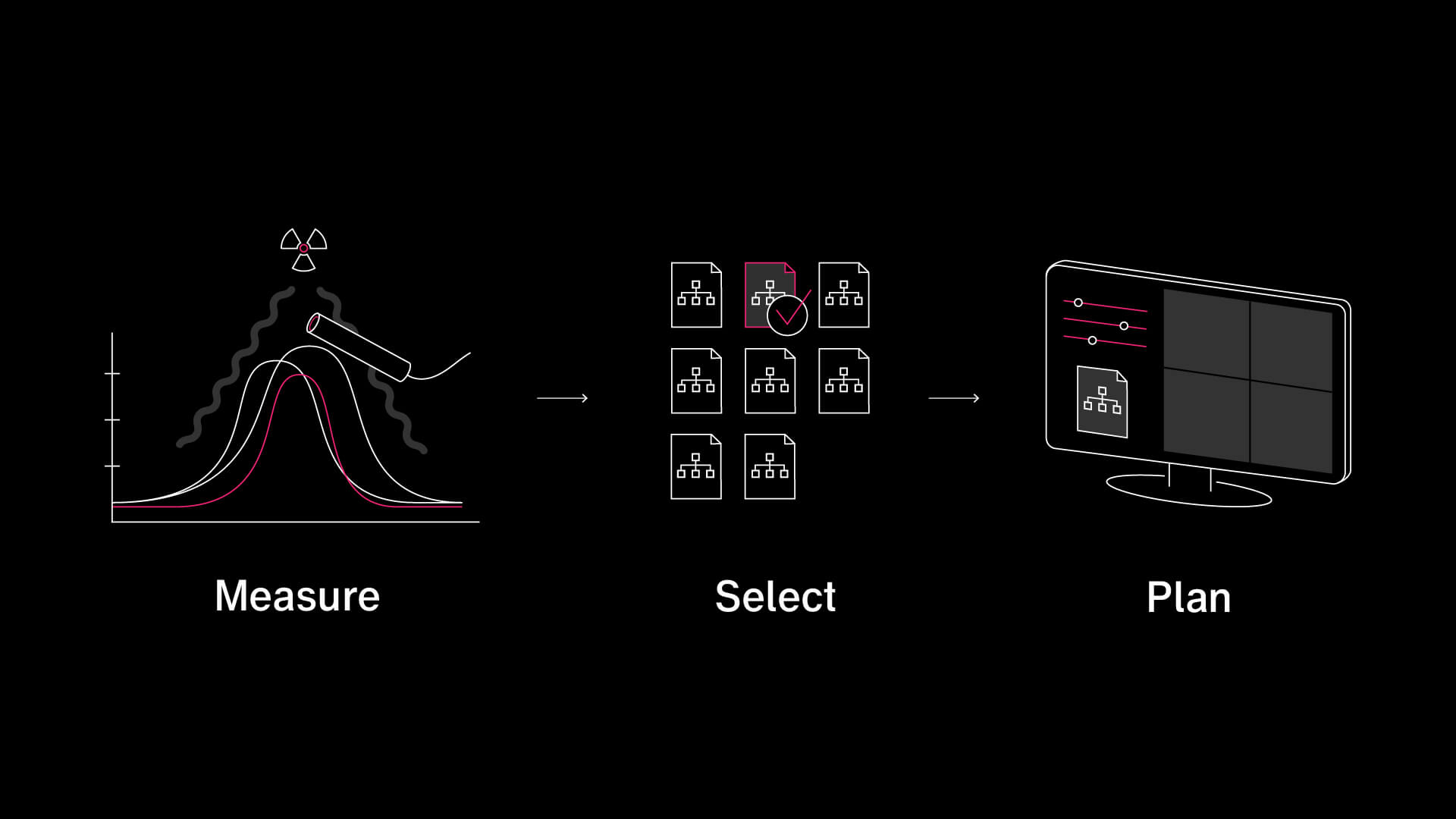Elements Solutions for Spine SRS is optimized for the treatment of spinal metastases, enabling precision at every level. Automatically generate CTV and critical structures aligned with International Spine Consortium Guidelines1, and enhance spinal cord sparing with steep dose falloff between the target and the cord.
Correct curvature with accuracy using tissue-specific mapping
Outline the target on all available datasets—despite differences in patient positioning during scanning—by using a deformable co-registration built on anatomical mapping that distinguishes between deformable and non-deformable tissues. The algorithm automatically identifies and corrects spinal curvatures while preserving vertebral integrity, ensuring accurate and personalized image co-registration.
Enhance consistency in target volume definition
Reduce intra-user variability with automation-supported delineation of target volumes and organs at risk (OARs). This streamlined process, aligned with International Spine Consortium Guidelines¹, promotes consistent, high-quality plans and saves time during contouring.
Treat your spine patients with confidence
Generate high-quality VMAT plans with respect to gradient index, conformity index and spinal cord sparing with Elements Spine SRS. Benefit from ExacTrac Dynamic to support high-precision patient positioning and continuous monitoring for safe and effective treatments.

Take spine radiosurgery to the next level
Elements Solutions for Spine SRS
Preparing for spine planning
We’ve built automation into every step of the pre-planning workflow, including anatomical mapping, curvature correction and target definition. Save time with fast and easy-to-use tools, add consistency and gain confidence from the submillimetric accuracy you’ll achieve along the way.
Explore our advanced tools for spine radiosurgery planning
Creating a dose plan with Elements Spine SRS
Elements Spine SRS, our automation-supported treatment planning software, optimizes the creation of high-quality spine metastases dose plans.
Get to know Elements Solutions for Spine SRS
Treat your spine patients with confidence using Elements and ExacTrac Dynamic®
Brainlab provides a complete end-to-end solution for spine SRS treatments. With our Elements software applications, you’ll generate high-quality plans in minutes, and perform highly accurate positioning and monitoring of patient anatomy during treatment with ExacTrac Dynamic.
Watch the video below to learn more.
Your spine radiosurgery plan starts here
Cox BW et al. International Journal of Radiation Oncology Biology Physics. 2012;83(5):e597-e605

